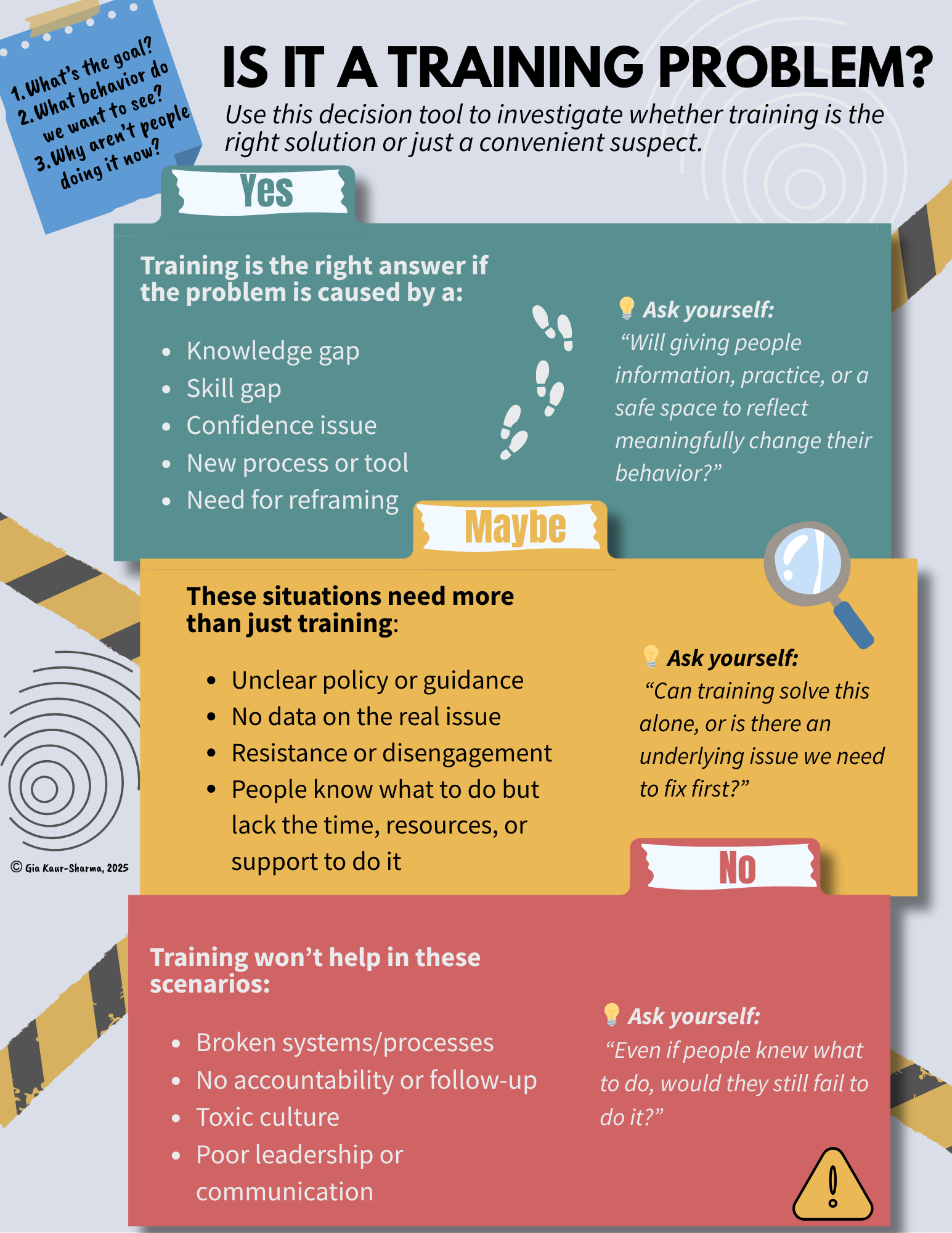Is It A Training Problem?
This one-page job aid helps instructional designers and learning professionals determine whether a performance issue is truly a training problem. It walks you through key questions to ask before jumping into design—so you can target the root cause, not just the symptoms.
Audience: Instructional Designers, Team Leads, Managers
Responsibilities: Needs Analysis, Instructional Design, Visual Design
Tools Used: Canva, Gimp
Experience the Job Aid below.
The Problem
Too often, training requests come in as foregone conclusions. “We just need a quick module on X.” But instructional designers know: not every performance issue is a training problem. Without the right questions early on, teams risk wasting time and resources developing solutions that don’t solve the real issue.
The Solution
I created a one-page job aid to help instructional designers, learning consultants, and team leads assess whether a training intervention is the right solution. It's a quick-reference flowchart styled like a set of detective case files to make root-cause thinking both accessible and engaging.
My Process
This job aid was inspired by those training requests that fly in—“We just need a quick course on X”—without a clear diagnosis of the problem.
To bring more clarity to those moments, I took inspiration from Cathy Moore’s Action Mapping, which emphasizes designing training around observable behaviors that support business goals. Her approach encourages you to identify the desired action before building content.
Using that principle, I developed a set of diagnostic questions to help learning professionals pause, assess, and decide whether training is the right solution, or if a job aid, conversation, or process fix might be more effective.
I then mapped those questions into a simple yes/no/maybe flow, paired with a detective metaphor to reinforce the idea that not all problems are what they seem. And good instructional design starts with an investigation.
Click the image below to expand or download the job aid for your reference.
Results and Takeaways
This resource has been shared with other IDs (on LinkedIn) to frame thinking early in a project. And I have started using it myself to serve as a springboard for framing conversations with stakeholders early in the training design process.
Key Takeaway:
This is near and dear to my heart - that designing with purpose starts long before the storyboard, or even learning objectives. It starts with asking better questions about why training is needed in the first place.

